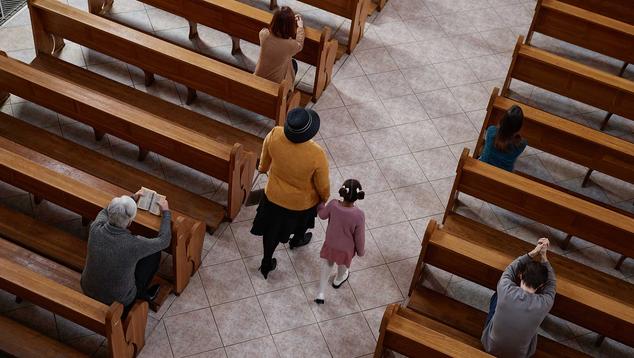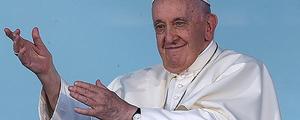WASHINGTON, D.C. -- As Americans observe Ramadan and prepare to celebrate Easter and Passover, the percentage of adults who report regularly attending religious services remains low. Three in 10 Americans say they attend religious services every week (21%) or almost every week (9%), while 11% report attending about once a month and 56% seldom (25%) or never (31%) attend.
Among major U.S. religious groups, members of The Church of Jesus Christ of Latter-day Saints, also widely known as the Mormon Church, are the most observant, with two-thirds attending church weekly or nearly weekly. Protestants (including nondenominational Christians) rank second, with 44% attending services regularly, followed by Muslims (38%) and Catholics (33%).
Majorities of Jewish, Orthodox, Buddhist and Hindu Americans say they seldom or never attend religious services.
Twenty-six percent of Orthodox adults, 22% of Jewish adults, 14% of Buddhist adults and 13% of Hindu adults attend services regularly. Although Buddhist and Hindu adults have similar levels of regular attendance, Buddhist adults are much more likely to say they seldom or never attend (75%) than Hindu adults (51%). The largest segment of Hindu Americans, 36%, say they attend about once a month.
Americans with no religious affiliation, including those who say they are atheist or agnostic, are very unlikely to attend church. Nevertheless, 3% say they attend weekly or nearly weekly.
Major religious celebrations for people of the Christian, Jewish, Muslim and Hindu faiths in March and April -- which involve gatherings of the faithful at churches, synagogues, mosques and temples -- will likely draw many more adherents than typical weeks.
Gallup measures church attendance and religious affiliation on nearly every U.S. survey it conducts. These results are based on aggregated data from Gallup telephone surveys conducted in 2021, 2022 and 2023, which yield enough sample to examine attendance among a larger number of religious groups than would be possible in typical survey samples.
Beyond Protestants, Catholics and those with no religious affiliation, other religious groups each represent 2% or less of the U.S. population. The combined 2021-2023 data comprise interviews with more than 32,000 U.S. adults and at least 200 respondents in each religion, except for Orthodox churches and Hinduism. Gallup also constructed similar aggregates using 2000-2003 and 2011-2013 data to assess changes in religious service attendance over time.
Nearly All Faiths Seeing Declines in Regular Attendance
Two decades ago, an average of 42% of U.S. adults attended religious services every week or nearly every week. A decade ago, the figure fell to 38%, and it is currently at 30%. This decline is largely driven by the increase in the percentage of Americans with no religious affiliation -- 9% in 2000-2003 versus 21% in 2021-2023 -- almost all of whom do not attend services regularly.
Still, most religious groups have also seen a decline in regular attendance at religious services over the past two decades.
Among religious groups, Catholics show one of the larger drops in attendance, from 45% to 33%, while there are slightly smaller decreases among Orthodox (nine percentage points) and Hindu followers (eight points). There is also a 24-point decline for “other” religious groups, generally those not large enough to report separately as their own group or those that are difficult to categorize based on respondents’ answers.
In contrast to most religious groups, Muslim and Jewish Americans have shown slight increases in religious service attendance over the past two decades. The 38% of Muslim adults who regularly attend mosque is up from 34% in 2000-2003, although lower than in 2011-2013 (46%). The increase in synagogue attendance among Jewish Americans has been steadier, moving from 15% two decades ago to 19% last decade and 22% currently.
Mormon adults show no meaningful change in church attendance compared with 2000-2003, but they did report higher attendance in 2011-2013 than they do now.
Bottom Line
On any given weekend, about three in 10 U.S. adults attend religious services, down from 42% two decades ago. Church attendance will likely continue to decline in the future, given younger Americans’ weaker attachments to religion.
Specifically, more 18- to 29-year-olds, 35%, say they have no religious preference than identify with any specific faith, such as Protestant/nondenominational Christian (32%) or Catholic (19%). Additionally, young adults, both those with and without a religious preference, are much less likely to attend religious services -- 22% attend regularly, eight points below the national average.
These trends are consistent with other Gallup indicators of religious beliefs and practices, including the importance of religion to Americans and formal membership in churches and other houses of worship.
To stay up to date with the latest Gallup News insights and updates, follow us on X.
Learn more about how the Gallup Poll Social Series works.




